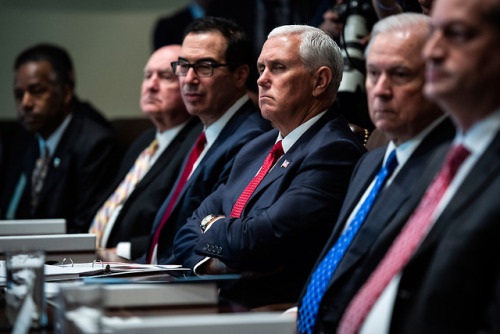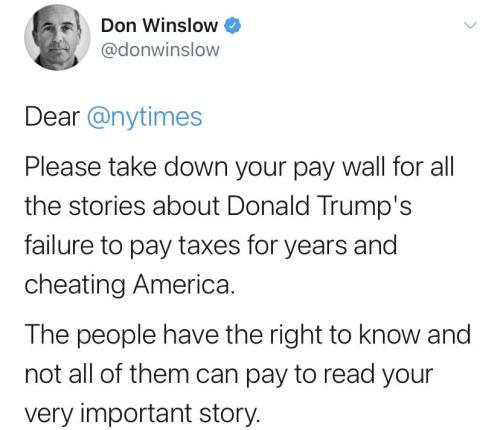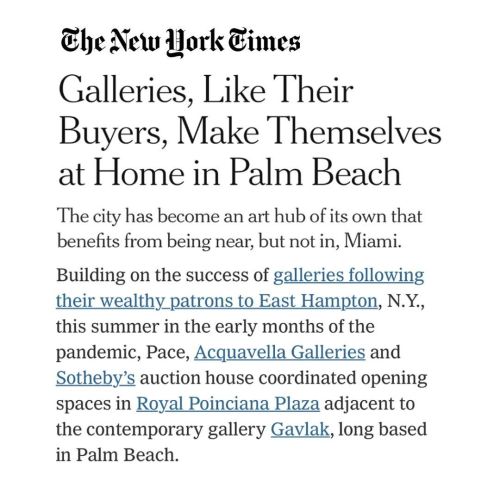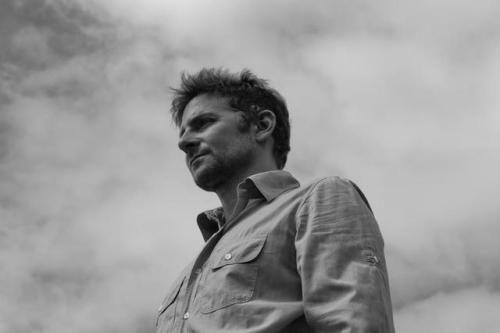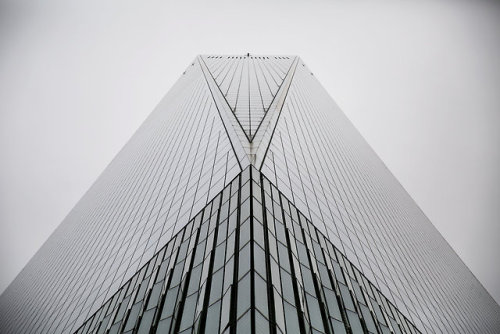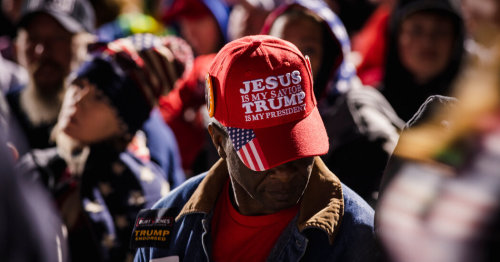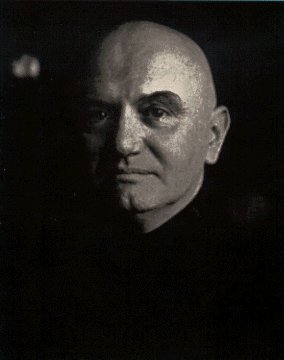#nytimes
Who wrote the ‘resistance’ op-ed? Despite denials, most people are still in the running.
We sorted some officials into loose groups based on likelihood of authorship and theories offered in public spaces.
Post link
THE PRESIDENT’S TAXES: CHARTING AN EMPIRE: A TIMELINE OF TRUMP’S FINANCES
By Russ Buettner, Gabriel J.X. Dance, Keith Collins, Mike McIntire and Susanne Craig
Sept. 27, 2020
Tax records provide a detailed history of President Trump’s business career, revealing huge losses, looming financial threats and a large, contested refund from the I.R.S. President Trump’s tax returns portray a businessman who takes in hundreds of millions of dollars in some years yet racks up chronic losses. Playing a tycoon executive on “The Apprentice” earned Mr. Trump nearly $200 million. Endorsement and licensing deals that followed the show’s debut brought the Trump name to products and hotels around the world and made him hundreds of millions of dollars more. Investments in companies run by others have been immensely profitable for the president — although he plays no official role in the operations of those businesses. Some of Mr. Trump’s own companies generate tens of millions of dollars in profit every year.
Ultimately, however, his own businesses are much bigger losers than winners. The tax returns for Mr. Trump and hundreds of his businesses reveal the hollowness, but also the wizardry, of the self-made-billionaire image honed through “The Apprentice.” They demonstrate that he was far more successful playing a business mogul than being one in real life.
MAKING A FORTUNE
Mr. Trump was adrift when he got a big break on “The Apprentice.” He used his reality-TV persona to ink a string of worldwide licensing and endorsement deals. The tax returns that Mr. Trump has fought to keep secret cast a harsh light on his finances, revealing a businessman who regularly reports losing so much money that he has gone for years paying little or no income taxes and today finds himself in a tightening financial vise.
He has churned through hundreds of millions of dollars in a series of career reinventions, aided by tax-avoidance maneuvers, all laid bare for the first time in tax-return data obtained by The New York Times that extends over more than two decades. The returns comprise information that Mr. Trump has disclosed to the I.R.S., not the findings of an independent financial examination. Even so, the records paint the most complete portrait yet of how Mr. Trump leveraged failure and fame on his improbable path to the White House.
At the start of the new millennium, Mr. Trump was in financial trouble. The chance to play a reality-TV business mogul on “The Apprentice” changed his fortunes dramatically. An unusual arrangement with the show’s producers entitled him to half its profits, and as its ratings soared the money rolled in. in all, “The Apprentice” earned Mr. Trump nearly $200 million. The show’s success spawned endorsement and licensing deals around the world, generating more than $230 million from 2000 through 2018. For Mr. Trump, no endorsement was too small, and he rented out his name to everything from Oreo cookies and Domino’s Pizza to mattresses and neckties.
Licensing deals were made with developers of hotels and towers from Azerbaijan and Turkey to Hawaii and Manhattan. Mr. Trump’s taxes also reveal that his licensing deal in Istanbul has been significantly more lucrative than previously known, with declared earnings of at least $13 million. Along with “The Apprentice,” the endorsements and licensing deals added up to more than $427 million in reported profit for Mr. Trump in this time period.
THE I.R.S. COMES KNOCKING
Fame brought a windfall to Mr. Trump, but it also left him with something unfamiliar: a large tax bill. With so much money pouring in from his newfound celebrity and the branding associated with it, Mr. Trump suddenly found himself having to pay income taxes for the first time in years.
Mr. Trump had long managed to sidestep taxes in part because of nearly $1 billion in business losses he incurred in the 1990s and could carry forward to cancel out income in future years. But that option was largely used up by the time his “Apprentice” and licensing profits kicked in, and over a three-year period starting in 2005, he paid over $70 million to the Internal Revenue Service.
They were some of the biggest tax bills of his life and were far more than anything he would owe over the next decade, which would see him pay no taxes at all for five years and only $750 during his first year as president. After a brief period of indebtedness to the I.R.S., he was able to return to tax avoidance by claiming losses on the businesses he owned and operated. Beyond licensing and endorsements, real estate — in which Mr. Trump had first made a name for himself — remained essential to his bottom line. Mr. Trump’s retail and commercial spaces at Trump Tower in Midtown Manhattan reported a total of $336.3 million in profit from 2000 to 2018. And Trump World Tower on the East Side of Manhattan earned Mr. Trump more than $167 million in profit over the same period. Among his most profitable investments is a 30 percent stake in two office buildings, owned and operated by Vornado Realty Trust. Mr. Trump’s share of the profits totaled $176.5 million through the end of 2018. But many of his highest-profile properties are money losers, none more so than the sprawling collection of golf courses he bought with profits from “The Apprentice” and licensing deals. The golf properties have cost Mr. Trump dearly, with declared losses of more than $315.6 million since 2000. Trump National Doral, a major Florida golf resort, has reported losses of more than $162.3 million.
TURNING LOSSES INTO GOLD
As his businesses bled money yet again, Mr. Trump used a bold financial move to turn the tables on the I.R.S. and claim a $72.9 million refund. With the addition of money-losing golf resorts in the United States and Europe, as well as a hotel in the Old Post Office in Washington, Mr. Trump has once again been able to claim annual losses that wash away much of his taxable income. The losses are very real — and some are very large.
Mr. Trump declared more than $1 billion in losses for 2008 and 2009 that appeared to be largely related to the latest, and final, failure of his Atlantic City casino investments. In a particularly audacious accounting move, he used the losses to claim a $72.9 million refund of federal taxes from the previous four years — virtually everything he had paid to the U.S. Treasury during the peak of his “Apprentice” success.
It had echoes of that earlier titanic loss on his returns from the 1990s that resulted in years of tax avoidance. This time, however, the I.R.S. decided to take a hard look at Mr. Trump’s gambit and started an audit, one that has yet to be completed almost 10 years later.
By the time Mr. Trump announced his candidacy in 2015, his revenue streams from “The Apprentice” and licensing were drying up, and he was in need of financial reinvigoration. If he hoped his unlikely presidential bid might, at least, revitalize his brand, his derogatory remarks about immigrants quickly cost him. NBC cut ties with the Miss Universe pageant, which it co-owned with Mr. Trump. NBC also dropped “The Apprentice.” His proceeds from fame continued to tumble, falling below $10 million in 2017 and to $2.9 million in 2018.
At the same time, Mr. Trump’s presidency has, in some respects, helped his business. At the Mar-a-Lago club in Palm Beach, Fla., a flood of new members starting in 2015 allowed him to pocket millions more dollars a year from the business. Mr. Trump’s profits reported from the Florida club has risen dramatically compared with the previous decade. In the end, however, the financial picture for Mr. Trump is fraught.
DANGER SIGNS AHEAD
The vise is tightening: Mr. Trump has sold off many of his stocks, the I.R.S. has him under audit and huge bank loans will soon come due. The president’s tax returns suggest that as he approaches one of the most consequential elections in American history — down in most polls, under I.R.S. audit and heavily in debt — his businesses may not be well equipped to navigate what lies ahead.
As many of his companies continue to lose money, Mr. Trump has more than $300 million in loans, for which he is personally responsible, coming due within the next four years. He liquidated hundreds of millions of dollars in stocks in recent years and may have less than $1 million left in his portfolio, according to his public financial disclosures. The pandemic has crippled the hospitality and recreation industry that so much of his portfolio of properties is dependent on.
And hanging over his head is the audit. Should the I.R.S. reverse the huge refund he received 10 years ago, Mr. Trump could be on the hook for more than $100 million.
sorry i can’t also post the infographics w financial data from thearticle
By David Leonhardt
Sept. 27, 2020
阅读简体中文版閱讀繁體中文版Leer en español
The New York Times has obtained tax-return data for President Trump and his companies that covers more than two decades. Mr. Trump has long refused to release this information, making him the first president in decades to hide basic details about his finances. His refusal has made his tax returns among the most sought-after documents in recent memory.
Among the key findings of The Times’s investigation:
Mr. Trump paid no federal income taxes in 11 of 18 years that The Times examined. In 2017, after he became president, his tax bill was only $750.
He has reduced his tax bill with questionable measures, including a $72.9 million tax refund that is the subject of an audit by the Internal Revenue Service.
Many of his signature businesses, including his golf courses, report losing large amounts of money — losses that have helped him to lower his taxes.
The financial pressure on him is increasing as hundreds of millions of dollars in loans he personally guaranteed are soon coming due.
Even while declaring losses, he has managed to enjoy a lavish lifestyle by taking tax deductions on what most people would consider personal expenses, including residences, aircraft and $70,000 in hairstyling for television.
Ivanka Trump, while working as an employee of the Trump Organization, appears to have received “consulting fees” that also helped reduce the family’s tax bill.
As president, he has received more money from foreign sources and U.S. interest groups than previously known. The records do not reveal any previously unreported connections to Russia.
It is important to remember that the returns are not an unvarnished look at Mr. Trump’s business activity. They are instead his own portrayal of his companies, compiled for the I.R.S. But they do offer the most detailed picture yet available.
Below is a deeper look at the takeaways. The main article based on the investigation contains much more information, as does a timeline of the president’s finances. Dean Baquet, the executive editor, has written a note explaining why The Times is publishing these findings.
The president’s tax avoidance
Mr. Trump has paid no federal income taxes for much of the past two decades.
In addition to the 11 years in which he paid no taxes during the 18 years examined by The Times, he paid only $750 in each of the two most recent years — 2016 and 2017.
He has managed to avoid taxes while enjoying the lifestyle of a billionaire — which he claims to be — while his companies cover the costs of what many would consider personal expenses.
This tax avoidance sets him apart from most other affluent Americans.
Taxes on wealthy Americans have declined sharply over the past few decades, and many use loopholes to reduce their taxes below the statutory rates. But most affluent people still pay a lot of federal income tax.
In 2017, the average federal income rate for the highest-earning .001 percent of tax filers — that is, the most affluent 1/100,000th slice of the population — was 24.1 percent, according to the I.R.S.
Over the past two decades, Mr. Trump has paid about $400 million less in combined federal income taxes than a very wealthy person who paid the average for that group each year.
His tax avoidance also sets him apart from past presidents.
Mr. Trump may be the wealthiest U.S. president in history. Yet he has often paid less in taxes than other recent presidents. Barack Obama and George W. Bush each regularly paid more than $100,000 a year — and sometimes much more — in federal income taxes while in office.
Mr. Trump, by contrast, is running a federal government to which he has contributed almost no income tax revenue in many years.
A large refund has been crucial to his tax avoidance.
Mr. Trump did face large tax bills after the initial success of “The Apprentice” television show, but he erased most of these tax payments through a refund. Combined, Mr. Trump initially paid almost $95 million in federal income taxes over the 18 years. He later managed to recoup most of that money, with interest, by applying for and receiving a $72.9 million tax refund, starting in 2010.
The refund reduced his total federal income tax bill between 2000 and 2017 to an annual average of $1.4 million. By comparison, the average American in the top .001 percent of earners paid about $25 million in federal income taxes each year over the same span.
The $72.9 million refund has since become the subject of a long-running battle with the I.R.S.
When applying for the refund, he cited a giant financial loss that may be related to the failure of his Atlantic City casinos. Publicly, he also claimed that he had fully surrendered his stake in the casinos.
But the real story may be different from the one he told. Federal law holds that investors can claim a total loss on an investment, as Mr. Trump did, only if they receive nothing in return. Mr. Trump did appear to receive something in return: 5 percent of the new casino company that formed when he renounced his stake.
In 2011, the I.R.S. began an audit reviewing the legitimacy of the refund. Almost a decade later, the case remains unresolved, for unknown reasons, and could ultimately end up in federal court, where it could become a matter of public record.
Business expenses and personal benefits
Mr. Trump classifies much of the spending on his personal lifestyle as the cost of business.
His residences are part of the family business, as are the golf courses where he spends so much time. He has classified the cost of his aircraft, used to shuttle him among his homes, as a business expense as well. Haircuts — including more than $70,000 to style his hair during “The Apprentice” — have fallen into the same category. So did almost $100,000 paid to a favorite hair and makeup artist of Ivanka Trump.
All of this helps to reduce Mr. Trump’s tax bill further, because companies can write off business expenses.
Seven Springs, his estate in Westchester County, N.Y., typifies his aggressive definition of business expenses.
Mr. Trump bought the estate, which stretches over more than 200 acres in Bedford, N.Y., in 1996. His sons Eric and Donald Jr. spent summers living there when they were younger. “This is really our compound,” Eric told Forbes in 2014. “Today,” the Trump Organization website continues to report, “Seven Springs is used as a retreat for the Trump family.”
Nonetheless, the elder Mr. Trump has classified the estate as an investment property, distinct from a personal residence. As a result, he has been able to write off $2.2 million in property taxes since 2014 — even as his 2017 tax law has limited individuals to writing off only $10,000 in property taxes a year.
The ‘consulting fees’
Across nearly all of his projects, Mr. Trump’s companies set aside about 20 percent of income for unexplained ‘consulting fees.’
These fees reduce taxes, because companies are able to write them off as a business expense, lowering the amount of final profit subject to tax.
Mr. Trump collected $5 million on a hotel deal in Azerbaijan, for example, and reported $1.1 million in consulting fees. In Dubai, there was a $630,000 fee on $3 million in income. Since 2010, Mr. Trump has written off some $26 million in such fees.
His daughter appears to have received some of these consulting fees, despite having been a top Trump Organization executive.
The Times investigation discovered a striking match: Mr. Trump’s private records show that his company once paid $747,622 in fees to an unnamed consultant for hotel projects in Hawaii and Vancouver, British Columbia. Ivanka Trump’s public disclosure forms — which she filed when joining the White House staff in 2017 — show that she had received an identical amount through a consulting company she co-owned.
Money-losing businesses
Many of the highest-profile Trump businesses lose large amounts of money.
Since 2000, he has reported losing more than $315 million at the golf courses that he often describes as the heart of his empire. Much of this has been at Trump National Doral, a resort near Miami that he bought in 2012. And his Washington hotel, opened in 2016, has lost more than $55 million.
An exception: Trump Tower in New York, which reliably earns him more than $20 million in profits a year.
The most successful part of the Trump business has been his personal brand.
The Times calculates that between 2004 and 2018, Mr. Trump made a combined $427.4 million from selling his image — an image of unapologetic wealth through shrewd business management. The marketing of this image has been a huge success, even if the underlying management of many of the operating Trump companies has not been.
Other firms, especially in real estate, have paid for the right to use the Trump name. The brand made possible the “The Apprentice” — and the show then took the image to another level.
Of course, Mr. Trump’s brand also made possible his election as the first United States president with no prior government experience.
But his unprofitable companies still served a financial purpose: reducing his tax bill.
The Trump Organization — a collection of more than 500 entities, virtually all of them wholly owned by Mr. Trump — has used the losses to offset the rich profits from the licensing of the Trump brand and other profitable pieces of its business.
The reported losses from the operating businesses were so large that they often fully erased the licensing income, leaving the organization to claim that it earns no money and thus owes no taxes. This pattern is an old one for Mr. Trump. The collapse of major parts of his business in the early 1990s generated huge losses that he used to reduce his taxes for years afterward.
Large bills looming
With the cash from ‘The Apprentice,’ Mr. Trump went on his biggest buying spree since the 1980s.
“The Apprentice,” which debuted on NBC in 2004, was a huge hit. Mr. Trump received 50 percent of its profits, and he went on to buy more than 10 golf courses and multiple other properties. The losses at these properties reduced his tax bill.
But the strategy ran into trouble as the money from “The Apprentice” began to decline. By 2015, his financial condition was worsening.
His 2016 presidential campaign may have been partly an attempt to resuscitate his brand.
The financial records do not answer this question definitively. But the timing is consistent: Mr. Trump announced a campaign that seemed a long shot to win, but was almost certain to bring him newfound attention, at the same time that his businesses were in need of a new approach.
The presidency has helped his business.
Since he became a leading presidential candidate, he has received large amounts of money from lobbyists, politicians and foreign officials who pay to stay at his properties or join his clubs. The Times investigation puts precise numbers on this spending for the first time.
A surge of new members at the Mar-a-Lago club in Florida gave him an additional $5 million a year from the business since 2015. The Billy Graham Evangelistic Association paid at least $397,602 in 2017 to the Washington hotel, where it held at least one event during its World Summit in Defense of Persecuted Christians.
In his first two years in the White House, Mr. Trump received millions of dollars from projects in foreign countries, including $3 million from the Philippines, $2.3 million from India and $1 million from Turkey.
But the presidency has not resolved his core financial problem: Many of his businesses continue to lose money.
With “The Apprentice” revenue declining, Mr. Trump has absorbed the losses partly through one-time financial moves that may not be available to him again.
In 2012, he took out a $100 million mortgage on the commercial space in Trump Tower. He has also sold hundreds of millions worth of stock and bonds. But his financial records indicate that he may have as little as $873,000 left to sell.
He will soon face several major bills that could put further pressure on his finances.
He appears to have paid off none of the principal of the Trump Tower mortgage, and the full $100 million comes due in 2022. And if he loses his dispute with the I.R.S. over the 2010 refund, he could owe the government more than $100 million (including interest on the original amount).
He is personally on the hook for some of these bills.
In the 1990s, Mr. Trump nearly ruined himself by personally guaranteeing hundreds of millions of dollars in loans, and he has since said that he regretted doing so. But he has taken the same step again, his tax records show. He appears to be responsible for loans totaling $421 million, most of which is coming due within four years.
Should he win re-election, his lenders could be placed in the unprecedented position of weighing whether to foreclose on a sitting president. Whether he wins or loses, he will probably need to find new ways to use his brand — and his popularity among tens of millions of Americans — to make money.
Post link
Thank you @nytimes and @hilariesheets for featuring GAVLAK Palm Beach in: “Galleries, Like Their Buyers, Make Themselves at Home in Palm Beach.” #MustRead
Gisela Colón: Existential Time opens to the public on December 3rd and will be on view through January 3, 2021.
Join us for a gallery open house on Saturday, Dec. 5th from 3-5PM EST at @theroyalpoincianaplaza with @pacegallery, @acquavellagalleries, and @sothebys to kick-off the 3rd annual @newwaveartwknd!
Come celebrate @gisela_colon_ and the opening of the artist’s third solo presentation with the gallery.
For more information or to schedule a viewing, click the link in our bio.
___
#giselacolon #existentialtime #newyorktimes #nytimes #lightandspace #fluidtime #fluidcolorspectrum #advancedcolortheory #organicminimalism #lightandspace #installationartist #lightsculpture #artsculpture #sculptureartist #womeninart #iridescent #contemporarysculpture #artinstallation #installationart #womenintheartworld #rectanguloid #rubidium #palmbeach #newwaveartwknd #newwave #nwaw #nwaw2020 #newwave2020 #womenartists #femaleartists @missgavlak @gr8whytebuffalo (at Gavlak Gallery)
https://www.instagram.com/p/CIRUqVblRBO/?igshid=106wfphq80gk1
Post link
Evangelical churches have long been powerful vehicles for influence on the American right. Now, some of those churches have embraced a new cause: promoting Donald Trump’s false claim that the 2020 election was stolen. https://t.co/XXiD6Pswdq
— The New York Times (@nytimes) Apr 25, 2022
Post link
“Amazing Lux” - Always pro and turning in great shot after great shot. Did some golden wings this after noon. Pics to follow. #underwaterpics #201magazinebestofissue #nycmodels #nytimes #nytfashionweek2019 #fashionweek #reddresses #beautifulbizzaremagazine #tatoos #inkedmagazine #inkedgirls #inkedunderwater #fashionista #creativelive #fiercewomen (at Cresskill, New Jersey)
https://www.instagram.com/p/B1kHhSSHy7G/?igshid=1xw0e3w1sx0um
Post link
This year I had my first illustration in The New York Times Book Review. I’ve always wanted to work with them, and I had a lot of fun doing this piece for the book “Three Rooms” by Jo Hamya!
Post link
Why does one write? Because it isn’t there! Unlike Everest and other celebrated eminences. Beginners sometime ask me how a novel is written, the answer to which is: Any way at all. One knows only when it is finished, and then if one is at all serious, he will never do it the same way again.
I should like the reader to be aware that a book of mine is written in the English language, which I love with all my heart and write to the best of my ability and with the most honorable of intentions — which is to say, I am peddling no quackery, masking no intent to tyrannize, and asking nobody’s pity. (I suspect that I am trying to save my own soul, but that’s nobody else’s business.)
-Hal-







